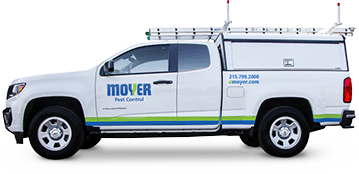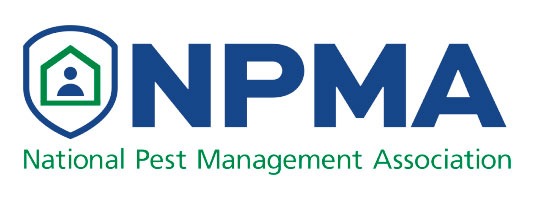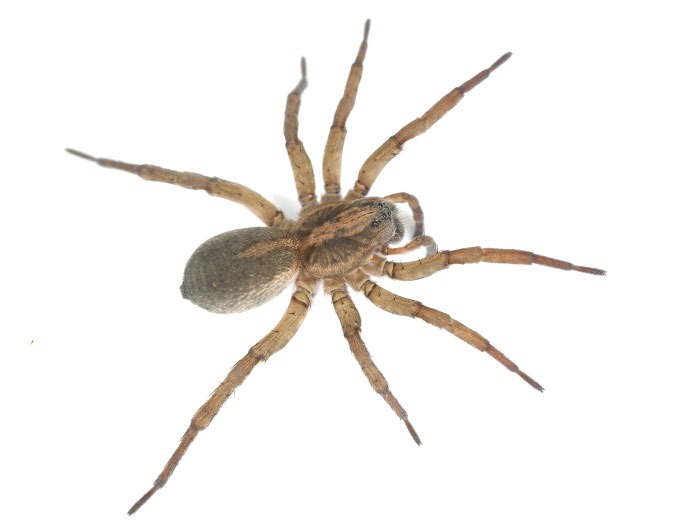
There are more than 45,000 species of spiders in the world, 3,000 species found in the United States and 45 different species of spiders found in the state of Pennsylvania. The only place in the world where spiders aren’t found? Antarctica.
Spiders fall into the arachnids category, a class of arthropods that includes scorpions, mites and ticks well known for having eight legs. Unlike their insect cousins, spiders do not have antennae.
Spiders kill other types of prey by trapping it in their webs, lassoing prey and even mimicking prey to avoid detection. They kill an estimated 400-800 million tons of prey each year.
Since there are so many different species of spiders, their size varies wildly from extremely tiny — .011 inch long — to massive, up to a foot long. Usually, females are larger than males.
Spiders are carnivorous and venomous but only a small percentage are potentially dangerous to humans. They rarely bite humans.
Types of Spiders in Pennsylvania, New Jersey and Delaware
Because there are more than 45 different species of spiders in the state, we’ll review just a few of the most common spiders found in Pennsylvania.
Interestingly two of the types of spiders you may be most familiar with —the black widow and brown recluse — are not commonly found in Pennsylvania. They do sometimes make their way into the region through shipping from other places.
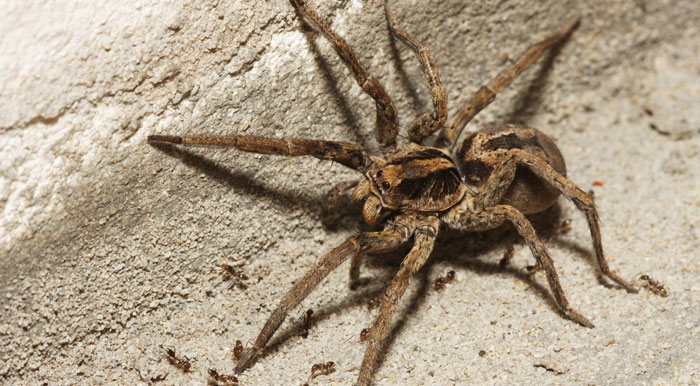
Wolf Spider
(Lycosidae)
Wolf spiders are perhaps the most notable type of spider found in Pennsylvania. Wolf spiders are carnivorous spiders that are a useful part of the food chain by killing other insects. Like their namesake, the wolf, wolf spiders are “sprinters” and hunt down their prey. This type of spider ranges from 10-35 millimeters in size, has eight eyes, and is known to have excellent vision. Wolf spiders are nocturnal and hunt at night. The venom of a wolf spider does not cause necrosis, but a bite from this spider can be painful and lead to swelling. An allergic reaction to a wolf spider bite, which is rare, may lead to symptoms like nausea, dizziness and rapid pulse.

Common House Spider
(Parasteatoda tepidariorum)
Common house spiders, also known as “American house spiders” as its name suggests, are the type of spiders you might find in your home. These nuisance pests measure at about 5-8 millimeters, have eight eyes, an elongated abdomen and are brown to light tan in color with shiny skin and dark brown stripes in a pattern similar to a candy cane. Common house spiders do not hunt for prey. Instead, they maintain webs and travel from one to another seeking trapped food. A bite from a common house spider will leave a red, itchy welt but most likely will not cause other health issues.
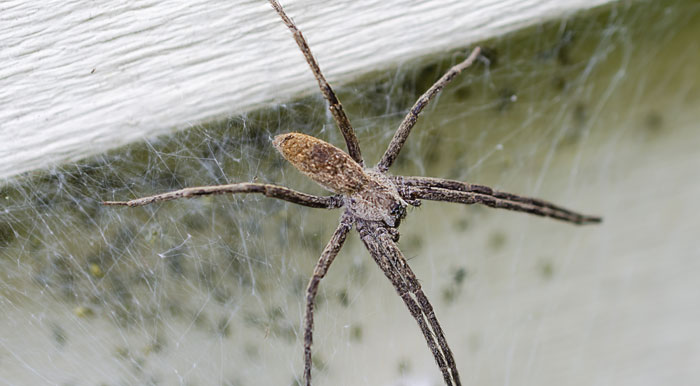
American Nursery Web Spider
(Vespula germanica)
American nursery web spiders are sometimes confused with wolf spiders because they look very similar. The difference is that their eyes are arranged in two rows rather than three. This type of spider does weave webs to hold their eggs but also actively hunts for prey. Females are about 12-15 millimeters long while males are between 9-15 millimeters.
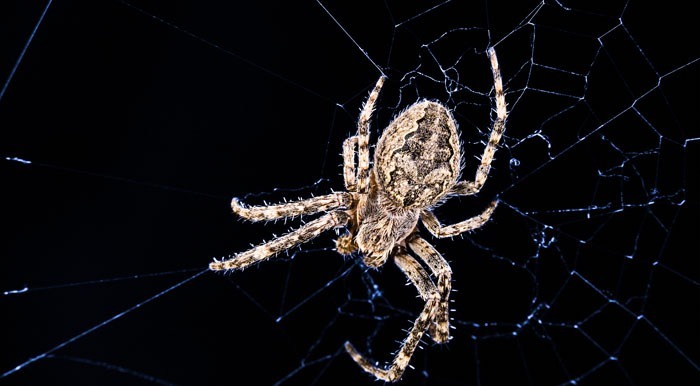
Bridge Orb Weaver
(Larinioides sclopetarius)
Bridge orb weaver spiders measure differently whether they are male or female. Females are about 10 and 14 millimeters long while males are between 8 and 9 millimeters long. This type of spider builds webs on manmade structures like bridges and prefers to be in the sunlight.

Broad-Faced Sac Spider
(Trachelas tranquillus)
Broad-faced sac spiders are most commonly found in Pennsylvania under stones, boards or crawling on window sills or siding. Female broad-faced sac spiders are about 7-10 millimeters long while males are between 5-6 millimeters. This type of spider eats dead insects and other spiders.
Signs of an Infestation
Keeping an eye out for spider webs in your home is an effective way to check for signs of a spider infestation. Be sure to look in dark areas, along with corners, ceiling beams and chandeliers. You may also notice spider eggs — these are white web balls near an active web. Also look for spider droppings or the actual physical presence of spiders in your home.
Health and Damage Considerations
While all spiders have fangs and most possess venom, most spider bites will not impact humans. There are some exceptions: people with compromised immune systems or other medical conditions. Interestingly, venom from spiders is toxic to their prey but not to humans. Spiders also do not cause damage to property.
Behavior
All spiders are considered predators that rely on hunting other insects or spiders to eat. For this reason, spiders play a large role in the food chain. Many spiders build webs to either protect their eggs or as a tool for hunting prey. Spiders are mostly solitary creatures but some do live in colonies.
Habitat
Spiders are found all over the world except for Antarctica. Different species of spiders have different habitat preferences. Of course, spiders are famous for their intricate webs, but different types of spiders live in deserts, on the water, inside and outside in moist, wooded areas. Only certain types of spiders prefer to live indoors, including inside homes. Within a home, spiders seek out hidden spaces like basements, under stairs, garages and other areas with clutter.
Lifecycle
Spiders experience three different stages in their lifecycle: egg, spiderling and adult. Female spiders can produce egg sacs with up to 2,500 eggs. Most spiders live for one to two years, but some can live up to 20 years. A common house spider, for example, typically lives for one year.
Feeding
Spiders are carnivorous and eat other insects like mosquitoes, flies, moths and sometimes other spiders. Some larger spiders may eat worms, snails, frogs, lizards, birds and bats. While spiders mostly eat other types of insects, some do eat different plant types. Many spiders capture prey via their intricate webs.

